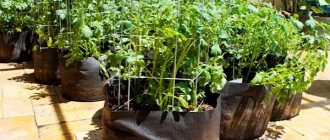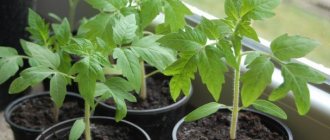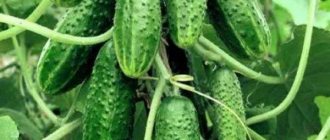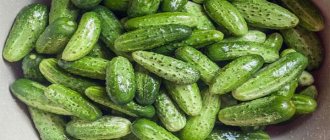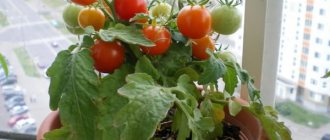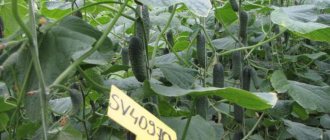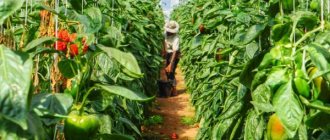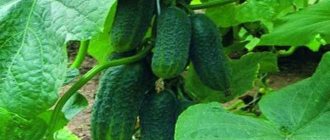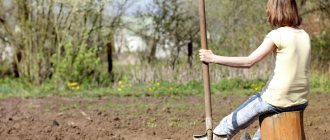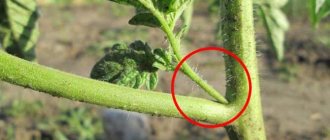Features of the landing method
Regardless of the variety, cucumbers are demanding on soil. They need fertile, warm, loose, moist soil. And this result can be achieved by planting vegetables in bags: woven, plastic, bags of sugar and other bulk products. They contain soil mixed with fertilizers, and a drainage and irrigation system is provided.
In large containers, the root system deepens faster, where it receives maximum nutrients. The fruits are actively growing and developing. In addition, in bags (if installed in the right place) the soil does not overheat, and the roots breathe and do not suffer from excess moisture - it leaves without additional drainage.
According to the technique, there are more than 10 plants in bags per square meter, while in open ground it is possible to grow no more than 4 healthy roots.
The method of planting vegetables in bags - a “vertical bed” - is simple and suitable for any plot, even a small one, saves space in the garden and allows you to grow cucumbers on a large loggia, balcony, or porch. The bags last for several seasons. After harvesting, the soil is poured out and the cloth is dried so that the “beds” can be reused next year.
Planting cucumbers
There are two ways to grow cucumbers in plastic or wicker bags: seeds and seedlings. If you decide to plant cucumber seeds in large containers, it is better to sow them not only in holes on the surface, but also deep in the ground. To do this, about 10 cuts of at least 5 cm in length are made on the sides and the seed is placed in the soil, and then the soil is lightly compacted. This method allows the seeds to germinate quickly; the first shoots will appear within a week.
When planting seedlings, it is important not to damage the young roots. You need to make a hole in the soil the same size as the lump of earth from the seedling glass and lightly water it with warm water, then carefully remove the lump of earth and place it in the hole. For the first 4 days, the seedlings are watered abundantly and shaded so that they do not get scorched in the sun. During this time, young plants manage to adapt to new conditions and begin to grow further.
Pros and cons of the method
By choosing the technology of planting cucumbers in bags, gardeners get rid of many of the problems associated with growing this crop in open ground or a greenhouse. Advantages of the method:
- Space saving, compact. A good harvest is harvested from a small plot.
- Vegetables ripen earlier than in open ground.
- Mobility. The vertical bed can be dragged in case of emergency. It makes it possible to grow vegetables in areas that are not suitable for this: under a fence, on a balcony, etc.
- No weeds or parasites. Weeds do not have time to grow, moles cannot reach the roots, and the dangerous late blight disease does not damage the plants if watered correctly.
- Ease of hilling and maintenance in general.
- Vegetables are clean and not rotten.
The presented agricultural technology has few disadvantages, but they do exist. Those who have tried to grow cucumbers in bags call the method painstaking; it requires thoughtful, thorough preparation. The disadvantages also include:
- the need for additional materials;
- the importance of correctly timing landing;
- difficulties with watering and setting up the drainage system (you cannot overwater the bushes, and if there is not enough water, the cucumbers will taste bitter);
- The moisture level in the bags needs strict control.
Advantages and disadvantages
There are many advantages of using this particular method of growing cucumbers, but along with them there are also some disadvantages that slightly cloud the overall picture. For this reason, in order to make a final decision, it is worth studying all the advantages and disadvantages of cultivating cucumbers in bags.
- The list of advantages includes the following:
- saving space in the garden beds, which is especially important for small garden plots;
- simplicity and ease of care for growing plantings (for example, weeds do not actively develop in bags);
- earlier terms of obtaining a tasty and high-quality harvest;
- long fruiting period;
- reduced likelihood of diseases and crop pests appearing, but even if this happens, it will be much easier to cope with the problem.
- A significant advantage is also the ability to preserve harvested vegetables longer, since they did not touch the ground during cultivation.
- As for the weaknesses of this method, first of all these are:
- it is difficult to control the humidity of the substrate, and in case of waterlogging, the root system of plants quickly rots, and they themselves quickly die (for gardeners who come to the site once a week, this is not the most successful planting option);
- the impossibility of successfully using bags in regions with a dry and arid climate, since a rapid increase in soil temperature contributes to the drying out of the root system;
- the likelihood of damage to bags and scattering of soil under the influence of ultraviolet solar radiation (for this reason, the selection of suitable products should be approached with all responsibility, giving preference mainly to dense materials).
With sufficient attention to the plantings, all of these disadvantages can be minimized, significantly increasing the chances of successfully growing cucumber crops in bags or sacks.
Selection of bags
Preparing to organize a vertical bed begins with choosing materials. For planting you will need:
- bags;
- soil and fertilizers;
- sticks and ropes for gartering plants;
- irrigation pipes (plus hoses).
The choice of bags must be approached especially carefully: choose products of the required volume and material so that the root system develops inside without being subject to drought or rotting. Subsequently, caring for such a bed will not bring much trouble. How to choose bags?
- The optimal volume is at least 50 liters (optimally: 70-120). One plant is planted in small containers, and two roots are planted in larger bags.
- Best materials: polypropylene fiber. It is used to make bags for sugar and other bulk products. Fabric and polyethylene are allowed, but these materials do not allow water to pass through well and do not heat up.
- Light-colored material will not overheat in the sun, so it is good if the bag is white.
For cucumber seedlings, used bags of flour, sugar, construction waste, even thick plastic bags for waste are suitable. The fabric should easily allow air and moisture to pass through and have a weave. New products do not require additional processing, and if they have already been used before, the bags are washed, dried, and treated with fungicides.
Preparing bags and filling soil
Bags should not only be durable, but also clean; it is better to take new ones; turn used ones inside out, rinse and dry in the sun. Next, follow the rules:
- The bag will fill to about halfway. Wrap the edges up to this level with a roller, which will serve as the edge of the future mini-bed.
- Pour any of the available materials into the bottom: manure or chicken droppings, weeded weeds, straw, sawdust, kitchen waste, last year's leaves, thin twigs, that is, everything that you usually send to compost. The thickness of such a layer is a quarter of the height of the entire bag (20–30 cm).
- Compact the resulting “pillow” and water. You can use hot water, regular water from a barrel, or a solution with a compost accelerator, Fitosporin, Radiance, etc.
- Pour 3-4 buckets of soil mixture on top, consisting of ordinary soil from the site and humus - 2:1 or 1:1, depending on the fertility of the soil on your site. Add 1-2 cups of wood ash. Another option is to buy ready-made universal primer. The layer of soil mixture above the “cushion” should be at least 20 cm.
- At the bottom of the bag, at the ends, and not at the bottom, make several punctures with a knife. Without them, rain and irrigation water will stagnate in the bag, the roots will begin to rot, and the plants will turn yellow and die.
- It is better to place the bag in a recess; if you grow it on a balcony or terrace, then place a basin to drain the water.
Other methods of planting in bags:
- Horizontal bed:
- The bag is filled with earth to the top.
- A second bag is pulled over it from the neck side and secured.
- Holes are cut in the end for planting cucumbers.
- The bags are placed on the ground or suspended. In the latter case, the cucumber lashes hang down.
The bags are arranged horizontally, three cucumbers are planted in each
- Bed in a factory bag with soil:
- They buy ready-made soil in bags with a volume of 20 liters or more.
- Lay horizontally.
- Cut holes for planting.
- Planting in bags, bags and other containers.
On the Internet you can buy special bags for growing any plants.
By the way, the method of growing in bags has long been known abroad.
You can type grow bag in Google and you will see a bunch of pictures of how garden crops are grown in various bags. Lots of ideas, not counting the fact that abroad in almost all online gardening stores you can buy both these bags and decorative fences for them to make it beautiful.
NatalijaG
https://www.forumhouse.ru/threads/109358/page-50
Filling bags
Choosing fertile soil for cucumbers is a primary task. Vegetables prefer organic matter, compost, rotted manure. Experienced agronomists add a little bit of everything to the soil, as well as complex fertilizers. But it is unprofitable to fill the entire volume with fertile soil, especially large containers, so half of them are filled with plant waste. The practice is like this:
- The bottom layer is drainage and makes up half of the total volume. The bottom is filled with grass, hay, fallen leaves and unrotted compost. You can add fresh manure if it is expected that the roots will not reach the humus. Do not place sharp branches or wood chips - they can tear the bottom.
- The middle layer is a quarter of the volume and consists of rotted compost or manure. This is a growing medium for cucumbers.
- Loose garden soil is the top layer.
- If necessary, add nutrients to the soil: ash, potassium, phosphorus, complex fertilizers.
Soil preparation
If a bag of standard volume (50-70 l) is selected for planting vegetables, the composition of the soil for one bed looks something like this:
- 2 buckets (20-24 l) of earth;
- bucket (10-12 l) of humus;
- hay, sawdust and other organic waste – 10 l;
- potassium – 10 g;
- superphosphate – 10 g.
The bags are filled with soil in the place where you plan to leave them, so as not to drag the heavy bed later.
When the “beds” are filled with soil and humus, water the soil moderately. The bags are tied, placed in a sunny place for 5-8 days so that the ground warms up, then taken to the shade. Cucumbers prefer cool weather and feel good under trees, near a gazebo or greenhouse, or near a fence. The bags are untied, deepened a little, dug into the ground so that the bed stands firmly. You can plant cucumbers.
Step by step: how to plant seedlings in bags
Polypropylene bags are convenient for growing; their volume is 50 liters. Such containers are used for transporting sugar and flour.
The intertwined threads allow air to pass through. This fabric is not afraid of dampness. But such bags will last no more than two seasons: under the influence of ultraviolet radiation, the fibers are destroyed and the container breaks.
If it is difficult to purchase such containers, then it is not difficult to find garbage bags. We need a volume of 60...70 liters. The soil will be filled gradually, so at the first stage it is easy to move the prepared places for planting cucumber bushes.
For future plants you need to prepare soil. The best option is to use humus. They fill the prepared container. No need to compact. After some time you will have to add soil. Plants form additional roots, which will improve nutrition. Kustov.
You need to pour mineral fertilizers into each bag:
- 10...15 g of ammonium nitrate (urea);
- 8...10 g of superphosphate;
- 5...8 g of potassium salt;
- 2...3 g boric acid;
- 5...8 g of gypsum.
Mix all added additives.
Landing is carried out in the following sequence.
- A depression about 10 cm wide is made in the ground at a distance of 15...20 cm.
- About 200...400 ml of water is poured into them.
- The prepared bushes are placed in the resulting holes.
- They are compacted in the root zone.
- Plantings are covered with non-woven fabric for the first few days from the sun so that the sun does not damage the leaves of the plants.
The prepared bags are transferred to where cucumbers will be grown in the future.
The video shows the process of planting seedlings in bags:
What types of fillers do vegetable growers offer?
Vegetable growers are constantly searching for interesting options for filling containers. They manage not only to grow crops, but also prepare the soil for planting next year.
- A bag is installed (usually two people work) and the lower part is filled with about a third of the volume with hay or mowed grass.
- Above, another third is covered with humus.
- Fill to the top with garden soil.
As a result we get:
- A moisture accumulator is formed at the very bottom. When the upper layers dry, the water will rise higher through the capillaries and moisturize the roots;
- excess moisture will flow down, here the process of decay of organic matter will take place, the gases that form are absorbed by the plant (additional nutrition);
- the root part grows in the upper and middle layers. Growth is expanding. For normal growth, an ordinary cucumber needs 20 liters of soil. There will be twice as much in the bag.
Step-by-step planting steps
Before planting seeds in bags, gardeners take care of the drainage and support system. For the latter, a long (1.5-2 m) stick is installed in the ground, at the end of which a nail is hammered and a tight rope or fishing line is tied. The support reaches to the very bottom and is located in the center of the bed.
The stick is installed before planting so as not to damage the roots of the plants. Next to the support - if drip irrigation is planned - hollow tubes with holes are inserted (more on them later). 24 hours before planting seedlings or seeds, water the soil in bags generously.
There are several ways to grow cucumbers: the seedling method and sowing seeds in open ground - in this case, a bag. It is preferable to choose the option with seedlings, since growing seeds is not very convenient if there is a stick of support sticking out. But some gardeners choose this technique because it saves time and does not require transporting the sprouts.
Planting seeds
This method is suitable for warm regions, where comfortable weather sets in already in the first ten days of May. It is advisable to choose two-year or three-year seed material.
Before planting the seeds, they are prepared:
- dried;
- soak in water in a transparent container for 24 hours;
- placed in the cold for hardening for 3 days;
- are rejected.
Only seeds that have sunk to the bottom of the container are suitable for cultivation. Those that rise to the surface are empty, they are thrown away. Seed planting scheme:
- They begin planting at the end of May.
- There are 15-20 seeds per bed.
- Water the bag generously and make holes in the soil at equal distances from each other.
- Pre-prepared seeds (dried, treated, if desired, with anti-parasite agents) are deepened into the ground 3-5 cm.
- 3-4 seeds are planted near the central support, the rest are placed in the side slits made in the bag.
- The planting is covered with cellophane to ensure optimal humidity and temperature. Do not remove until the first shoots.
Transplanting
The seedling method is chosen in colder areas. Seeds are sown at home in late April-early May. A separate cup is provided for each sprout, into which nutrient soil is added as the plant grows. At the end of May, 3-4 leaves are formed on each seedling. When a stable plus has been established outside, the sprouts can be planted. Planting plan:
- The day before planting, cucumbers in peat cups are watered abundantly to easily remove the root system along with the soil.
- In the soil in bags, depressions are made to the size of a cup. The bottom of each hole is moistened with warm water.
- The seedlings are placed one by one in the holes and sprinkled with earth so that all the roots are covered.
- The seedlings are shaded for 3 days so that the seedlings get used to the soil.
An experienced gardener will tell you how to plant cucumber seedlings in bags in the video below:
Description of the procedure step by step
To create a vertical bed, in addition to a bag, you will need a 2-meter wooden stick with a nail driven into the top - ropes will be attached here, and 4 pieces of hoses or other hollow tube, about 1 m long. Holes are drilled in the pieces in a checkerboard pattern - they provide soil drainage . What industrial cultivation in a greenhouse is like all year round is indicated in this article.
Video shows growing cucumbers in bags:
Preparing the bed
Cucumbers are heat-loving plants, but do not like direct sunlight. It is advisable to find a shaded place to grow them. The bag can be placed directly on the ground, having first dug a small depression for stability. If you don’t want to bother with weeding around vertical beds, you can place the bags on some kind of flooring - a sheet of old plywood, a chipboard door. You can find out which self-pollinating varieties are best for greenhouse use here.
- A wooden pole is placed in the bag and filled with soil. Light soil is suitable for cucumbers. Chernozem, clay soil and even peat are too heavy and cake in the bag. They fill the soil in layers: it is better to put dry leaves at the bottom, then rotted manure, and then light soil - forest soil, for example, or store-bought soil. Layers of manure and soil alternate. On average, a 1 m high bag contains 5 layers.
- While pouring soil, 4 pieces of hose with holes are inserted at a distance of 10 cm from the pole.
- The last 15–20 cm are not filled, but tucked in, forming a side.
- Ropes or fishing line are attached to the nail at the top of the pole and secured to the ground so that a kind of “hut” is obtained.
Video shows growing cucumbers in sugar bags:
Seed preparation
You can plant both seeds and seedlings. 2–3 year olds are most suitable as seed material: they produce more female flowers. If the seeds are from last year, then it is advisable to warm them up before planting for about 2 hours at a temperature of 50–65 C. What the Masha f1 variety looks like is indicated in this article.
- The seeds are soaked in warm water. Those that pop up are immediately deleted - they are empty.
- The material must be hardened. To do this, the seeds are left in warm water for a day, and then the container with them is placed in the refrigerator for 3 days.
- The seeds are germinated and planted in a vertical bed.
- If you want to receive fresh cucumbers before late autumn, plants of different heights are planted in one bag - early-ripening, mid- and late-ripening. If seedlings are used, then only strong seedlings with three true leaves are suitable for planting.
- Sowing at the end of May. After planting, the bed is watered abundantly.
The video shows growing cucumbers in bags with slots:
Cucumber care
For a good harvest, proper watering and fertilizing are necessary. Water and feed are supplied through hollow tubes. The best seeds for a greenhouse to use are indicated in this material.
- “Bagged” cucumbers are watered less often than those planted in the ground - approximately once every 3 days. Polyethylene holds water perfectly, and the vertical bed practically does not lose it.
- Check the moisture by plunging your finger into the soil. If you use a transparent bag, the condition of the soil can be seen through the film.
- Water for irrigation should be warm - about 23-25 C.
If irrigation through the tubes is not enough - there are too many seedlings or the harvest is abundant, then the roots of the cucumbers will begin to grow through the slits. In this case, the bag must be reinstalled on the tray, and water must be poured into the latter so that the plant can receive additional moisture. You can learn how to grow the German f1 variety from this article.
Feeding is carried out up to 5 times during the growth period, and then once every 2 weeks. The solution is poured through the tubes, just like water . The composition of the feeding depends on the period. You can learn when to plant cucumbers in a polycarbonate greenhouse from this link.
- For seedlings, use a solution of a mixture of superphosphate, ammonium nitrate and cow droppings. You can use special fertilizers that do not contain nitrate nitrogen.
- During growth and flowering, the proportion of cow dung decreases, and in addition to superphosphate, potassium sulfate is added to the mixture.
Cucumbers need phosphorus constantly, but in small doses. Its deficiency affects the development of the root system and green mass, which ultimately leads to poor fruiting. Excess causes leaf drop. Find out how to grow a good harvest of cucumbers here.
- When fruits appear, the fertilizing composition should include potassium, magnesium and nitrogen. The source of the elements is usually potassium nitrate.
- Growing cucumbers should be tied up. The first garter is carried out when 5–6 leaves are formed on the sprouts. This is why the ropes were attached to the pole. Each plant should have its own mating.
Cucumbers, if planted late, can bear fruit until October. The roots of the plants are reliably protected, so even the first frosts are not scary for them.
Caring for cucumbers in bags
When the seedlings are planted, the bags should take their proper place. Their edges are folded, forming low sides. This way the soil will not spill out. Vertical beds must be provided with moisture and slightly shaded, for example, by placing them under trees.
If everything is done correctly, caring for the garden bed will not take much time. Much less labor costs are required for several reasons:
- almost no weeds grow, so weeding is minimal;
- due to the fact that the soil in the bags is ventilated, there is no need for loosening and digging;
- if the soil is supplied with nutrients, fertilizing is not done;
- Such cucumbers are watered less often than those growing in ordinary beds.
Watering cucumbers
For vertical beds, watering cucumbers can be organized in the usual way, but experienced gardeners who use this technique recommend doing it by drip. You'll have to tinker, but the system has undoubted advantages:
- reducing the risk of root rotting and fungal diseases;
- harvest ripening several times earlier;
- slowing down the growth of weeds.
It is necessary to organize an irrigation system before planting, so care is taken to ensure its readiness in advance. Take a plastic pipe with a diameter of 2-4 cm and cut it so that it is 15-20 cm longer than the bag. You will need two such pieces per bag. The lower part, deepened into the soil, is equipped with holes made at a distance of 15 cm from each other. Irrigation pipes are installed at a distance from the support.
Adapters are inserted into the upper part of the pipe and connected to a hose through which the water that has settled in the barrel is supplied. Excess moisture flows into the pallets if the bags are kept indoors, and into the ground if they are kept outdoors. The frequency of watering is depending on the weather, 2-3 times a week in the evening.
Fertilizer
It is more convenient to supply nutrients to the roots through a tube used for watering. Fertilizers are poured through a funnel or cut-off plastic bottle.
What kind of feeding do cucumbers need:
- Three times throughout the entire season, starting from the moment the sprouts appear with 2-3 pairs of true leaves, mineral fertilizers are applied to the soil. These include potassium salt and superphosphates.
- Organic mineral fertilizers are added a month after watering: honey solution, nettle infusion, chicken droppings.
- Several times during the summer, the leaves are sprayed with a solution containing beneficial microelements.
Formation of bushes
Sprouts that have grown 20-30 cm with 5 true leaves are ready for gartering. It is carried out in two ways: vertical and horizontal, but only the first option is suitable for a vertical bed.
How to garter:
- A nail is nailed to the top of the support, ropes (threads, fishing line) are tied to it - one end for each shoot.
- The knot is tied between the second and third leaves. It should not be too tight, because the sprout will increase in size.
- The threads are pulled and attached to the support.
Traditional varieties of cucumbers produce female flowers on the side stems, which are fertile, and male empty flowers on the main shoots. To form more side stems and female flowers, pinching is done. The top of the central stem breaks off after the sixth leaf. The side shoots are tied to the central stem on a stick so that they do not interfere with the formation of cucumbers. A few side stems are left.
The formation of a bush is necessary in order to limit the growth of a large number of lateral branches, to which the plant will give all its nutritional forces.
Features of care
Cucumbers in bags need to be watered frequently: in dry, windy, sunny weather - twice a day. If this is not possible, organize drip irrigation. An alternative can be plastic bottles:
- Even at the stage of filling the bags with soil mixture, dig 1-2 bottles (5 l) vertically. The necks should be above the ground, and first make several holes in the walls.
- Fill the bottles with water and cap them.
- Add water periodically.
The bottle replaces drip irrigation
Another feature of growing in bags is feeding. If a cushion of organic waste was placed on the bottom, then you cannot also water it with infusions of mullein, droppings and nettles. Cucumbers extract similar organic matter from the depths of the bag. At the beginning of fruiting, apply phosphorus-potassium fertilizer only once:
- 1 tbsp. l. dissolve superphosphate in 1 liter of hot water;
- dilute to 10 l and add 1 tbsp. l. potassium sulfate;
- use 2–3 liters per bag.
If you planted in soil without a layer of organic matter, then the fertilizing should also contain nitrogen. Buy special fertilizers for cucumbers and follow the instructions. For example, a solution of BioMaster liquid concentrate (1.5 caps per 10 l) is watered every 7–10 days. To protect cucumbers in stressful situations (cold temperatures, heat, replanting, changing location), spray with Epin, Energen, Novosil, etc. During flowering, use boric acid (2 g of powder per 10 liters of water) or Ovary and Bud preparations.
Video: tips for growing cucumbers in bags
The formation depends on the specific cucumber. If this is a variety, then the plants are pinched above the 5th leaf and the side shoots are grown in a spread. Hybrids grow in one stem with a mandatory vertical garter. Side shoots are pinched over 2-3 leaves.
There is no need to tie it up at all if the bags are standing near a fence or near a mesh stretched between posts. You can stick a stake with a nail driven into the top into the center of each bag. Garter ropes are attached to the nail.
Collect greens regularly, not allowing them to overripe. Then the bush will direct all the juices to the tying and development of new cucumbers.
Difficulties when growing in bags
In terms of maintenance, vertical beds are better than traditional ones. But even for experienced gardeners, the process of growing cucumbers in bags causes difficulties. And the main thing, according to amateur agronomists, is soil moisture. The soil may be dry on top, but moisture will stagnate inside the bags, leading to rotting of the root system. The best solution to the moisture problem is a drip irrigation system.
Other difficulties in growing vertical beds include:
- Overheating of roots. Bags get hot in the sun, especially if they are in direct sunlight.
- Planting density. Gardeners plant 4 or more seedlings in one bag, which reduces their fruiting.
Planting in slotted bags
A vertical bed is formed as follows.
- No more than 3 cucumbers are planted on top of a bag filled with soil.
- The sides of the bag are cut in a checkerboard pattern so that the cut forms a kind of pocket.
- The sprouts are planted in the slots. On average, 12–15 cucumbers grow in one container.
- This creates a bed the height of the bag. It is necessary to make the slots after filling with soil.
Sprouts are usually planted in slots on bags.
How to increase productivity?
In order for cucumbers to develop well, a certain number of seeds - no more than 20 - and 3-4 bushes, if they are seedlings, are planted in one 50-liter bag. The quality, not the quantity, of shoots is the key to a good harvest. Experienced gardeners share their secrets of growing cucumbers. Pollination plays an important role:
- You can increase the yield of bee-pollinated varieties by spraying the plants with sweetened water in cloudy weather, which will attract insects.
- The quality of pollination of varietal cucumbers will increase the content of female inflorescences and a specimen with male flowers together.
- Trimming the lower leaves allows pollinators to reach the lower ovaries.
How to transplant correctly
Seedlings that have reached a certain age and are pre-hardened can be transplanted
The day before this important procedure, the seedlings are generously watered so that the earthen ball softens and does not damage the roots of the plants.
Compost is added to the designated area in advance, holes are made, and watered.
When planting seedlings in peat cups, they are positioned so that the edge of the hole is flush with the edge of the cup. Next, 3 liters of warm water are poured into each hole. Moreover, completely healthy seedlings are placed vertically, overgrown plants are placed at an angle. The root collars of seedlings are sprinkled with sand, since during transplantation the seedlings weaken and root rot can take advantage of the opportune moment to attack.
If the seedlings were grown in other containers, then they are planted by transferring them without disturbing the earthen ball. The roots of grown seedlings are quite fragile, so every effort must be made to prevent damage. The bottom of plastic glasses is simply cut out, and the earthen lump is pushed out from below.
When preparing holes, they are made for short-climbing varieties every 15 cm, and for long-climbing varieties a gap of 30 cm is left.
Deepen the cucumber seedlings to the cotyledon leaves; The sprinkled soil is easily squeezed with your hands, watered and mulched. Abundant watering of cucumbers is indicated for the first 3-4 days, and then the regime is gradually changed.
When planting greens in greenhouse areas, they use 2 types of plantings:
- Strongly branched hybrids are planted in one row, with an interval of 40-45 cm.
- Weakly branched crops are grown in 2 lines with an interval of 30 cm, or in a checkerboard manner.
Planting density is determined by varietal characteristics.
Harvesting
Timely harvesting will help prolong fruiting and collect the maximum amount of harvest. It is advisable to pick fresh cucumbers as they ripen, even every day. Green leaves left on a branch inhibit the development of new ovaries. You can determine that a cucumber is ripe by the following signs:
- the structure of the fetus is formed;
- the secondary flower fragment has dried out;
- coloring is uniform.
Some gardeners harvest cucumbers earlier, preferring young fruits - gherkins. They are smaller in size, ideal for blanks. In addition to fresh fruits, gardeners should regularly get rid of all diseased cucumbers - remove hooked ones, those with scratches and spots. The latter may indicate the development of the disease.
Harvest and storage
Harvesting is easy because the vegetables are suspended and visible among the leaves. Cucumbers should be collected daily, this is necessary for the formation of new ovaries.
Cucumbers can be stored for a long time in a cool place. Vegetables can be used for pickling and preservation with vinegar.
Diseases and pests
Cucumbers growing in bags are less likely to suffer from diseases and are attacked by pests. The more attentive the gardener, the sooner the first signs of the disease will be noticed and measures taken. Methods to combat common diseases:
- Powdery mildew is sprayed against fungus with special solutions, fungicides, and sour milk.
- Copper oxychloride and Bordeaux mixture help against brown spot.
- Leaves affected by rot (gray, white) are removed. The plant is sprayed with fungicides.
- Root rot is difficult to treat. Healthy vines take root again and change the watering regime.
Proper cultivation of cucumbers in a vertical bed guarantees a good harvest with a minimum of physical and time costs. But you need to plan the cultivation of vegetables at the initial stage: prepare bags, install them in a good shady place, provide support and a drip irrigation system, plant seedlings at the optimal distance from each other. Taking into account all the nuances, you can harvest a good harvest of cucumbers even on the balcony.
0
6
Copy link
Subtleties of care
Cucumbers require the following care:
- Maintaining constant soil moisture.
- Application of organic and mineral fertilizers.
- Formation of lashes.
- Carrying out preventive measures against pests and diseases.
- Weeding and attaching canes to supports.
- Harvesting mature vegetables.
Remember that cucumbers must be collected daily, otherwise they will become overripe and their taste will deteriorate. In addition, if harvested in a timely manner, this will increase the duration of fruiting of the plant.
Follow the tips described above and you will get a high yield of cucumbers.
Prepare bags for planting
Let's look at the preparation process step by step:
| Buy packages Strong container required. The weight of the earth in a bag is often 50 kg, so the loads are quite large. You should select sizes that will fit in the space allocated for cucumbers. The bags need to be prepared . To do this, several holes are made at the bottom for drainage and air exchange. They should not be large, otherwise the material will simply tear under load. | |
| Prepare ingredients for nutritional mixture Buy ready-made peat soil or collect peat, if possible. You need a lot of this component - about half of the total volume. Soil from the garden is also needed . It is picked up from a place where cucumbers have not grown for a long time; ideally, green manure should be planted on it in the fall and dug up before winter. Humus or rotted compost . You can add it separately, or you can immediately add it to the garden soil. Humus needs about a third of the volume of garden soil. | |
| Select materials for drainage and soil enrichment It is best to put straw or sawdust at the bottom. The sawdust should not be fresh, since fresh options take nitrogen from the soil, which is extremely undesirable. Wood ash . You need about a liter per bag. Perfectly saturates the soil with essential microelements | |
| Buy complex fertilizer You can collect several options: potash fertilizers, superphosphate, etc. But it’s difficult to dose, interfere, you can make a mistake and cause harm instead of benefit. It is much more convenient to use a complex drug. I use Zdraven, it contains all the microelements needed for cucumbers and is easy to use | |
| Fill out the package Place a layer of sawdust or straw 20 cm thick on the bottom. You can also use dried grass clippings. Next, a mixture of peat soil and garden soil with humus is poured in equal proportions . Before filling, ash and complex fertilizer are poured into the composition. |
Planting cucumbers in bags, choosing containers, care
We are preparing the place. The seat can be placed in absolutely any part of the house, since this technology does not require light. It is best to place the bags in one row along the wall for ease of caring for plants. This technology can also be used on a personal plot. In this case, it would be good to place the bags along the fence, in a slightly shaded place, next to a gazebo or fruit trees.
The place for bags must be equipped in advance. A kind of bed is made from a long pallet, or several, arranged in one row and filled 1/3 with soil. Next you need to prepare containers for the plants.
The bags should hold 80-100 liters. The container with soil must be wrapped with tape for stability. A layer of organic matter is placed at the bottom of the bag. Dry grass, straw, and chopped tree bark are suitable.
Half the volume of the container is filled with fertile soil, watered abundantly and tied at the top. In this state, the bag should stand in a sunny place for about a week to warm the soil. After this, you can put the container in a permanent place. If a pallet is not found, then prepared bags are dug into the area for stability.
You should maintain a distance in the row between the bags so that the grown strands of cucumbers do not intertwine with each other. A pole should be driven into the center of each bag to stretch the trellis. On each side, 4 tubes are inserted into the container almost to the very bottom; the lower end should be sealed with clay so that strong pressure does not erode the soil.
These tubes supply water to the roots of the plant through a hose. Water in this way with warm water 2-3 times every 10 days. To allow air to access the roots, small triangular cuts (2-3 cm) are made in the bag on all sides. The number of such holes should be equal to the number of bushes in a given bag. After this, you can plant cucumbers.
Soil preparation. The optimal soil composition for 100 liter containers is prepared according to the following recipe. 10-15 kg of manure is mixed with the same amount of sawdust or chopped straw, and 20-25 kg of regular soil is added. 10-15 g of superphosphate and 5-8 g of potassium fertilizers are added to the mixture. You can add another 200 g of wood ash.
Planting planting material. It is worth noting that the technology for sowing seeds is most effective in the southern regions, since an earlier start to the growing season is possible there.
When sowing, it is better to use seeds that have already been germinated. To speed up the development of cucumbers, before soaking, the seeds are treated with drugs that stimulate plant growth. The hatched seeds are planted in moist soil at room temperature to a depth of no more than 4-5 cm.
Disinfect seeds
How to plant cucumbers in bags:
| Prepare and sow seeds Be sure to disinfect planting material. The effect of potassium permanganate ensures the destruction of viruses and makes the seeds much more resistant to adverse conditions. Sowing of seeds is done in separate cups . Before planting, fill them with a fertile mixture and water with warm water. | |
| Grow seedlings correctly After germination, place the plants on the window. Provide lighting for at least 10 hours a day. Provide timely watering and fertilizing . It is advisable to spray the ground part with water in the mornings and evenings. | |
| Transplantation into bags is carried out when the soil warms up. The soil should have a temperature of about 20 degrees. 2 plants are usually planted in one standard 50 kg bag. The seedlings are carefully removed from the containers . Holes are made and cucumbers are planted | |
| Water the plants. After planting, water the seedlings generously. Moisture should saturate the root part. Mulch the surface with peat |
Preparing packages
First you need to prepare the packages. You can make them from the most ordinary black polyethylene film, which is 1.5 m wide and 40 cm long.
Therefore, measure the material using a tape and cut the piece with scissors. With 1.5 m of strip you will get 3 cucumber bags.
These sizes are not accidental. First of all, it is very convenient to divide the width of the polyethylene, allocating 50 cm for each bag. And a height of 40 cm corresponds to the depth of a 20 liter bucket. Accordingly, the resulting bags are 20 liters in volume - this is enough for growing cucumbers.
Then measure 50 cm, place the film on a flat wooden surface, take a newspaper, it is important that it is folded in one layer, and a pyrography gun with a thick tip. The thicker the tip, the wider the edge will be, so the bag will be stronger. Slowly run the gun over the surface of the newspaper, which will seal the film underneath but will not melt because the metal tip does not come into direct contact with the polyethylene.
With tea they fly away with a bang: oatmeal-chocolate cookies without baking and flour
I take milk chocolate, delicate cream and create incredibly beautiful desserts
Transforming chairs using unwanted jeans: new upholstery with your own hands
This way the edge will be very strong and quite wide.
